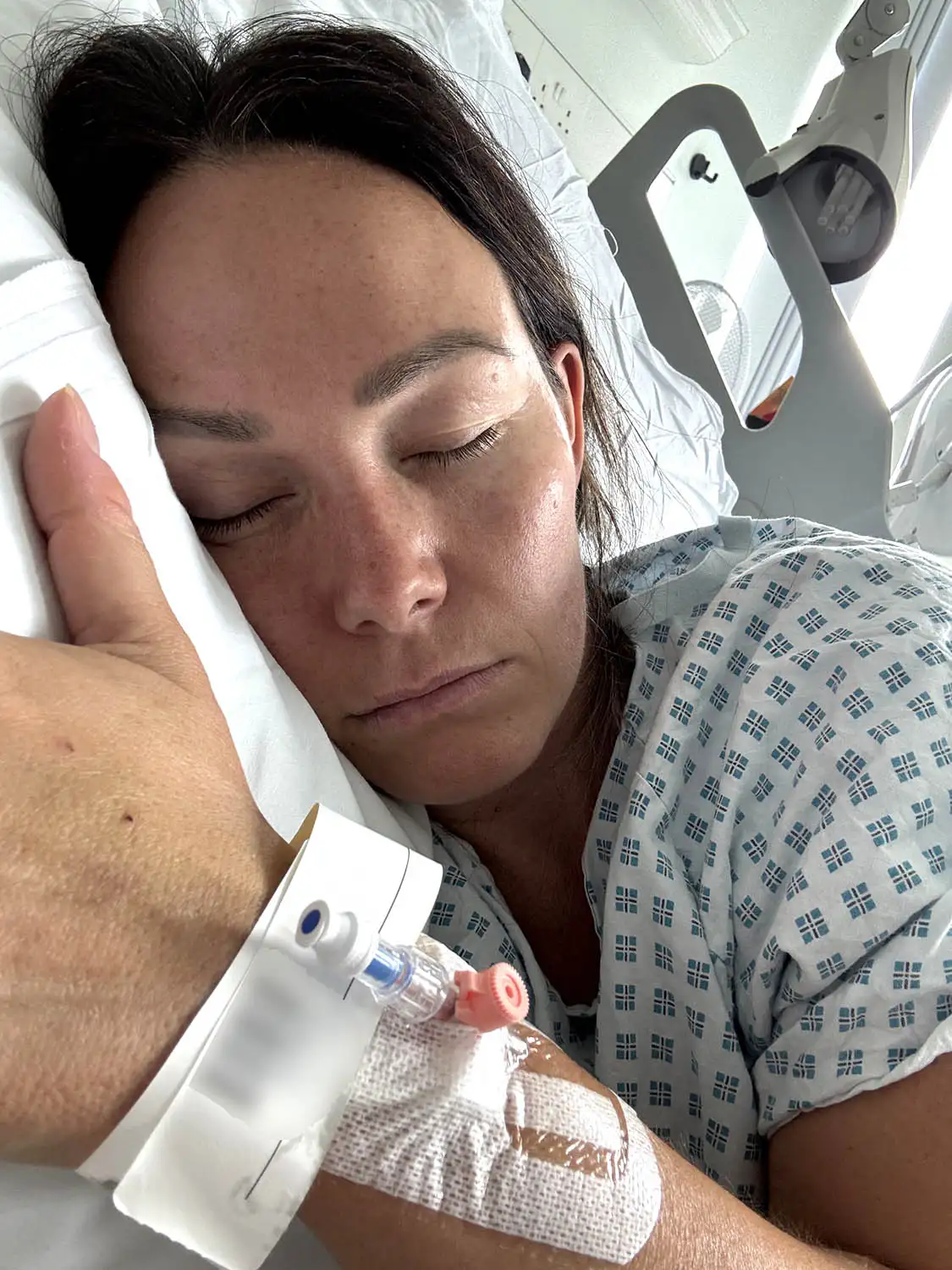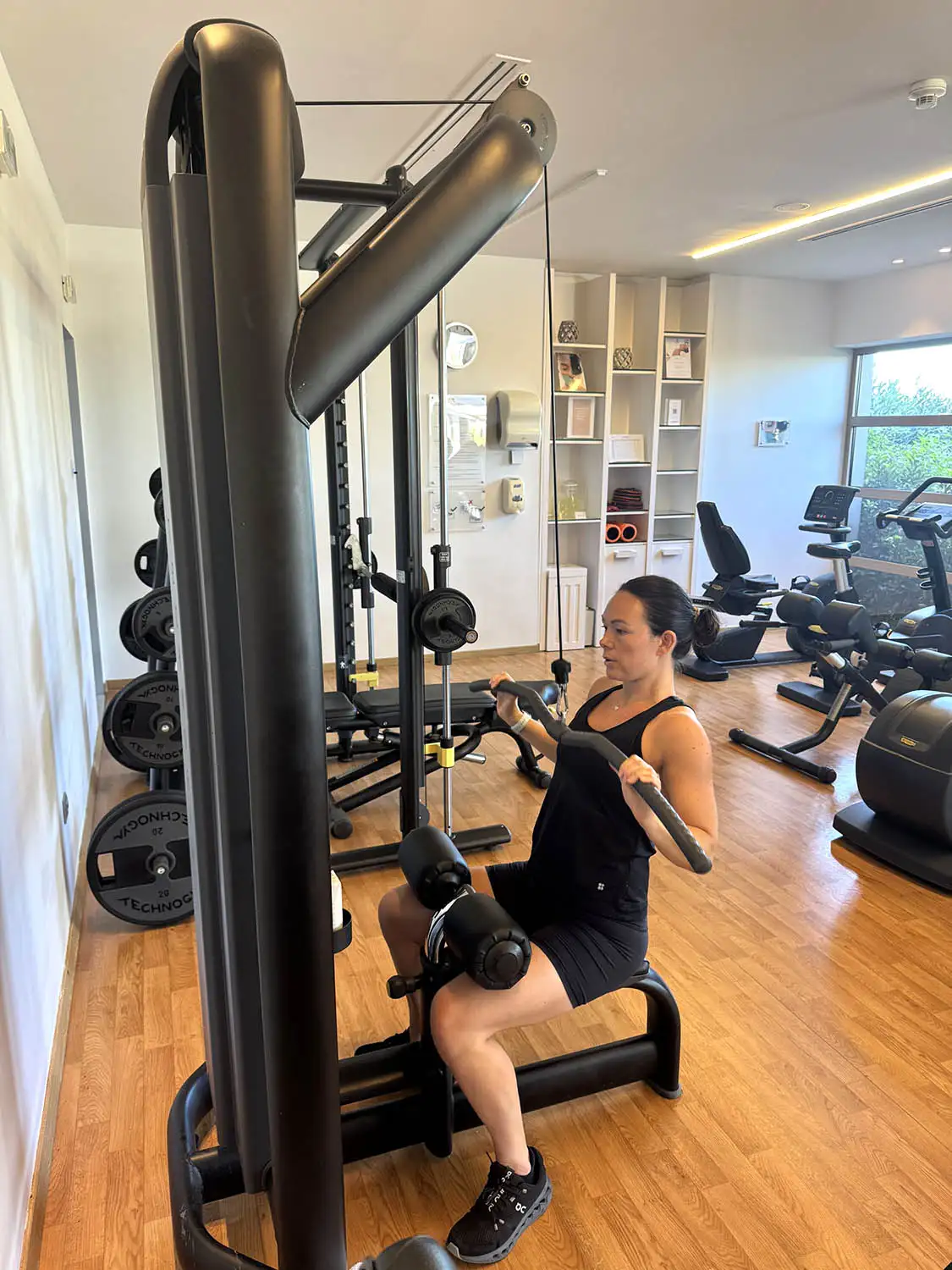- Linzi Todd, 40, was training to teach an outdoor bootcamp class when she developed tinnitus and severe headaches, which doctors dismissed as an ear infection
- When she sought care at the emergency room, an MRI showed she had a massive blood clot in her brain that measured 17mm — triggered by overexercising
- “If I hadn’t pushed as much as I did with doctors, I absolutely would’ve died,” she says

A personal trainer and mom says doctors initially dismissed the symptoms of a blood clot in her brain, telling her it was caused by overdoing it at the gym.
Linzi Todd, a 40-year-old personal trainer from the English town of Northampton, was training to teach an intensive outdoor bootcamp fitness class this past March when she suddenly developed tinnitus, or ringing in the ear.
“I woke up the next morning with a really banging headache. I popped a couple of pills, felt unwell but cracked on,” she said, according to the Daily Mail.

When she reached out to her doctor, she said they dismissed her symptoms as an ear infection “because I felt dizzy as well.”
“I just thought maybe my body was tired. I’m not the type of person that gets sick. I’ve always been really fit and healthy,” Todd says. “But the headaches persisted. I would wake up with intense throbbing in my head as soon as I got up every morning. It felt like the worst brain freeze and only lying down and painkillers would give me some relief.”
When her symptoms continued to intensify, Todd went to the emergency room, where an MRI revealed the source of her pain.
“He said he could see an acute subdural hematoma on your brain, which is very serious and a very large blood clot,” Todd said. It’s often the result of a head injury, the Cleveland Clinic says, but for Todd, doctors thought her bleed had a different origin story. They believed that overexercising tore her dura, the outmost layer of the membrane that covers her brain and spinal cord, as the bleed was caused by fluid leaking from her spine.
“It’s normally found in boxers, rugby players, horse-riders — someone that has had trauma to the head,” she explained. “I was walking around with that in my brain and it could’ve killed me.”
Fortunately, there is treatment, she explains; Todd is scheduled to undergo an epidural blood patch — whereby doctors use an injection of your own blood to stop the leak. As she explained, doctors told her, “ ‘We don’t often see bleeds of this size in women of your age without any head trauma’ and it was a medical emergency.”
“I was Googling what this condition was and it said there was a 25% survival rate. I thought, ‘Am I going to die? Do I need to plan my funeral?’ It was so traumatic. I had to say goodbye to my husband and daughter. I didn’t know if I was going to see them again or not.”

She shared that the clot was a challenge to diagnose because “I was passing all of their cognitive and reflex tests.”
“Doctors were baffled by how I was presenting based on my scans and what they found.”
Todd explains that she doesn’t “want anyone to be put off exercise because it’s a very rare thing to happen,” and is sharing her story not to warn about working out, but to encourage others to continue to seek medical help if they’re not getting satisfactory answers.
“I had to push every single step of the way. It would’ve had a different ending if I hadn’t pushed as much as I did with doctors. I absolutely would’ve died,” she says. “I just knew there was something wrong. I always tell others to listen to their own body and gut. Push to get seen and get answers.”